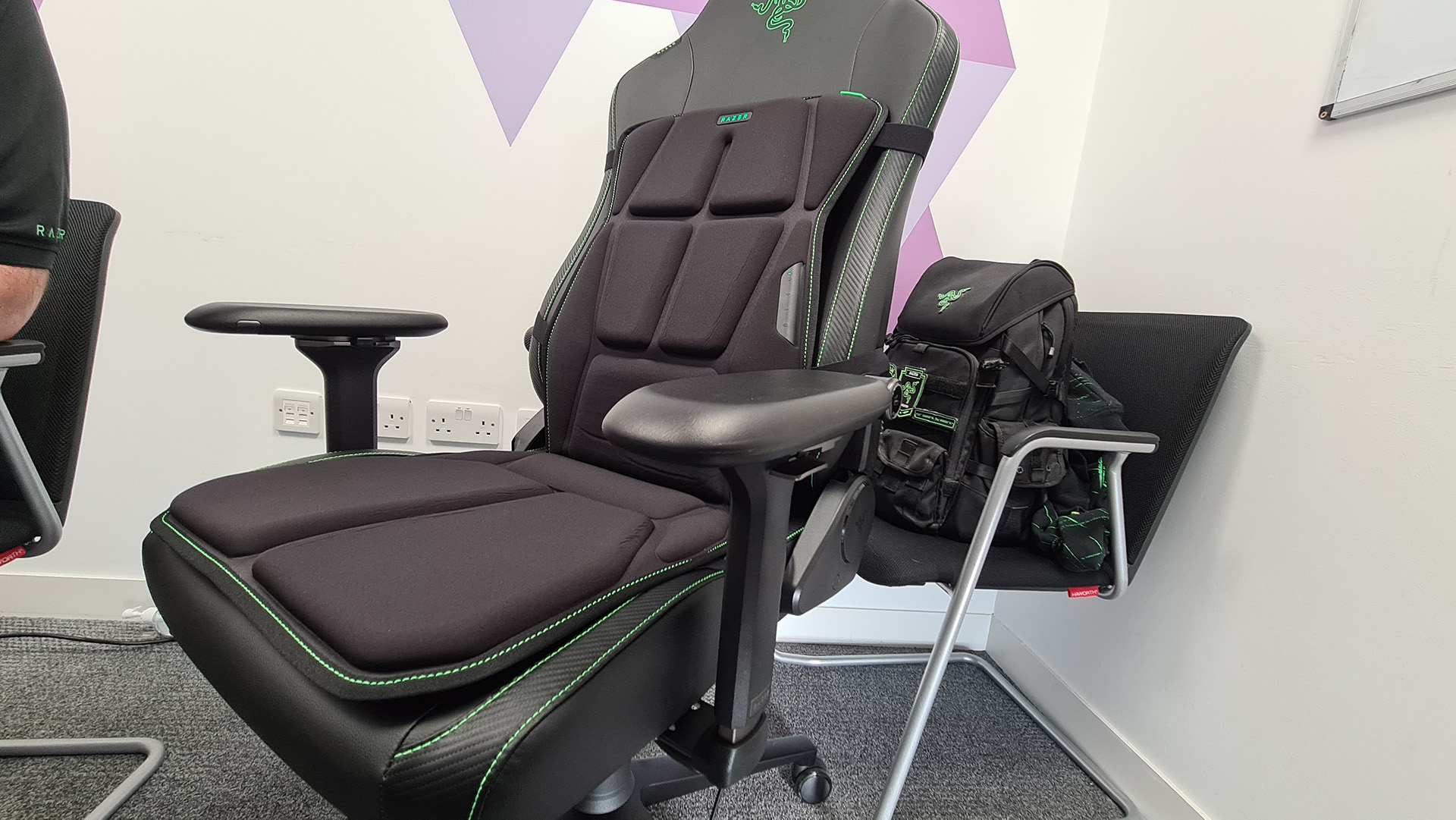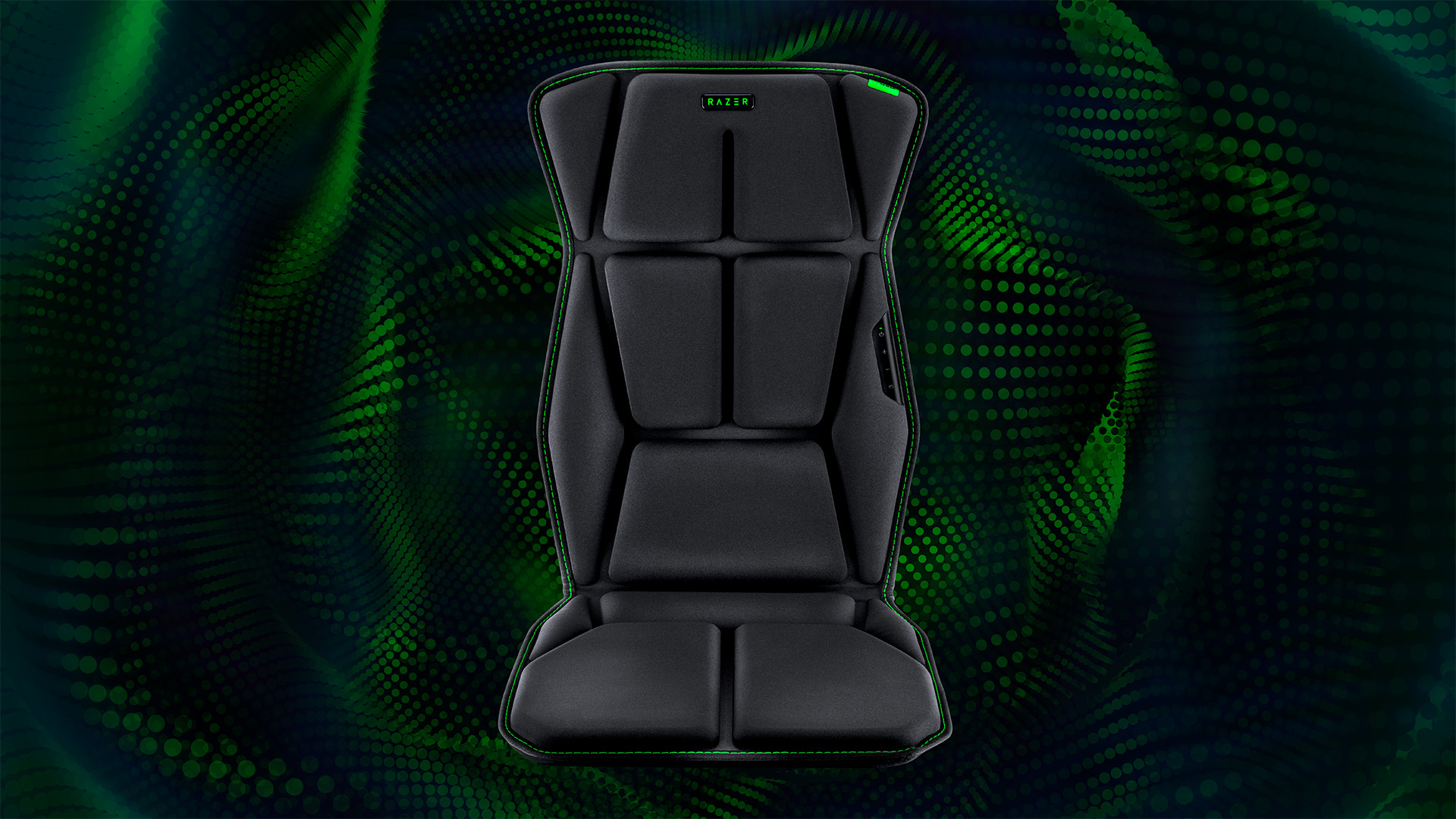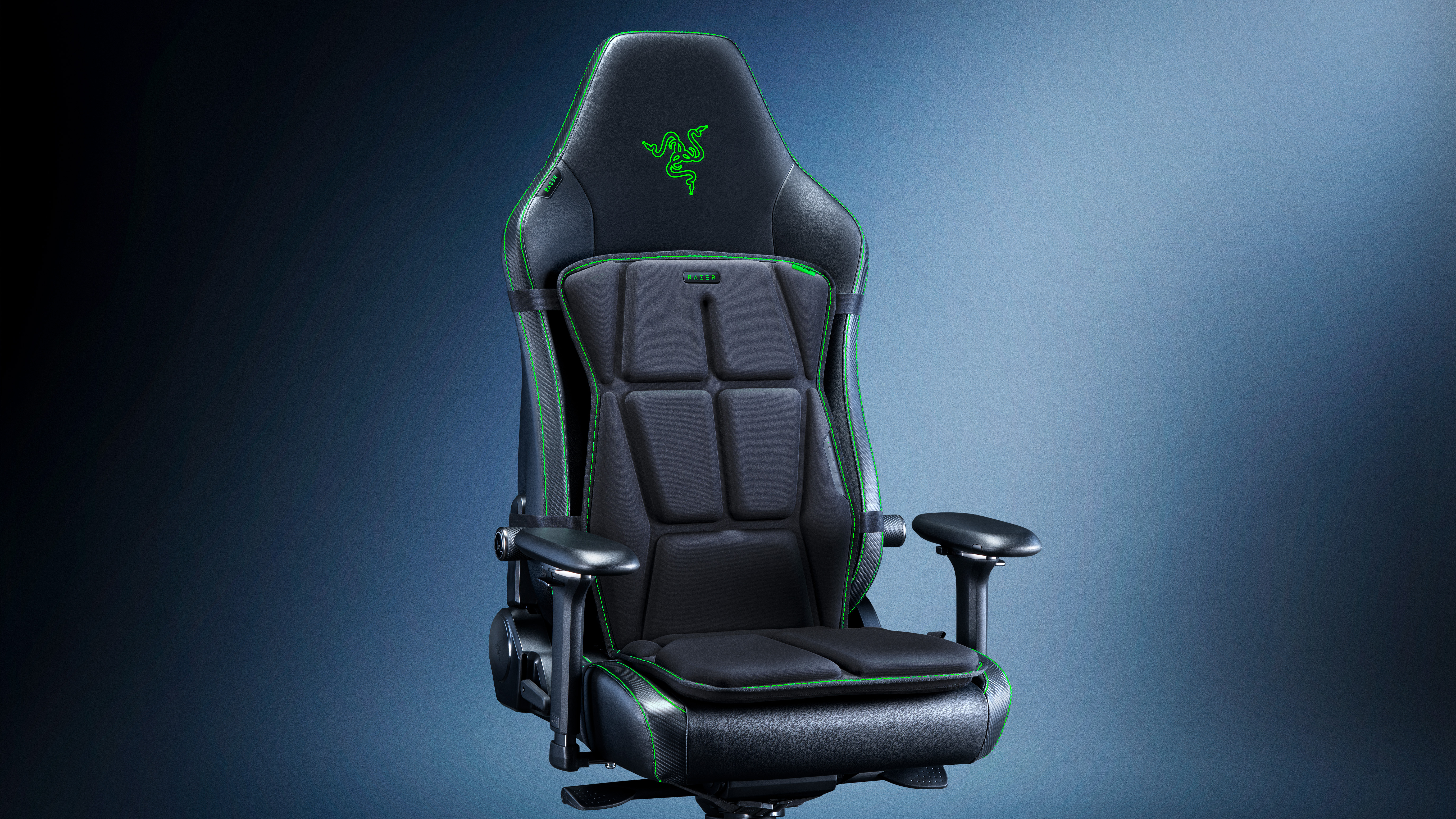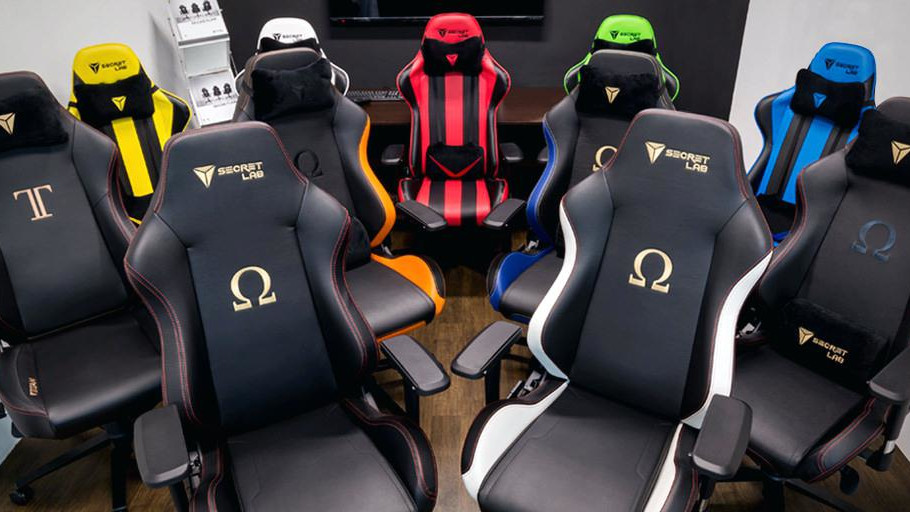Razer's bringing good vibrations to Razercon with a $300 vibrating seat cushion
I've tried it, it was weird.

Razer's new haptic gaming cushion is, well, interesting. It's called the Razer Freyja and it's a pretty self-explanatory device: you load it onto your chair, plug it in, and the six padded regions, each with a motor embedded within it, start a-rumblin' in time with in-game actions, sounds, or music. The idea is, with haptic feedback vibrating down your back and backside, you'll be more engrossed in your game.
It's certainly an idea—one that a few haptic companies have been pushing for a while now. There are haptic vests, haptic chairs (including one from Razer), haptic chair accessories, but never, as Razer tells me ahead of Freyja's release, a cushion.
I tried the haptic gaming cushion out ahead of its announcement over at Razercon just now. Loaded into a Razer gaming chair with the cushion attached (it's held on with a couple of adjustable straps and should work with most chairs) I sit back enough to get the full force of the device. I watch our long-standing Razer PR sadistically turn up the vibration force to maximum rumble in the new Razer Synapse 4 app and load up Final Fantasy XVI.
Final Fantasy is one of the games that supports the haptic cushion natively, meaning the developers have specifically coded support into the game and tied to certain actions. Hogwarts Legacy was also mentioned as having support baked into the game, as will Silent Hill and Snowrunner. I'm told support for future games will be made easy by a Unreal Engine 5 plugin. Though that's still relying on developers to support the thing, even if it's as easy as ticking a box in UE5.
If specific support for Freyja doesn't happen for a particular game you play a lot of, the haptics can also be set to respond to in-game sounds instead.
But back to my rump-shaking experience. With Final Fantasy loaded up, I was ready to kick butt and get my butt kicked in return. Tapping furiously on the provided keyboard and mercilessly murdering large lobster-looking creatures with one fell swoop of my magic hands (I don't play Final Fantasy, can you tell) I was getting properly rumbled.

Different actions cause different pads to shake. Flinging your sword into the air will see the pads engage near the top of the cushion, and as you come slicing down the lower pads engage. There was no discernable lag from my actions in-game into the cushion as I tried it out, though after a while of ferocious button mashing I became slightly numbed to the intricate haptic details.
The biggest gaming news, reviews and hardware deals
Keep up to date with the most important stories and the best deals, as picked by the PC Gamer team.
As a keen enjoyer of sim racing, and as someone who's tried many of the best racing wheels for PC personally for review, you'd think I'd be all over this sort of haptic feedback off the track. And yet I'm really only thinking about ways it could be incorporated into a sim racing setup. Attach this into a Playseat or similar, crank up the force feedback on the wheel, and you're looking at a more immersive simulator experience without spending the tens of thousands of dollars usually required for a full-motion rig (some of which offer some sort of seat-based feedback, by the way).
I'm not saying it's close to a mega sim-racing rig with all the actuators, but it's more than a stiff-seat level of immersion.


Best chair for gaming: the top gaming chairs around
Best gaming desk: the ultimate PC podiums
Best PC controller: sit back, relax, and get your game on
Yet beyond the sim racing setup, I'm not so sure. Maybe I'd need longer with it than a fleeting Final Fantasy experience to understand the full appeal—maybe a horror game would be fun—or I'm just not the target audience. But I didn't walk away feeling like I'd want to pay the $300 fee to feel the sensation again.
Even set to music mode and when listening to Chase & Status and Stormzy's bass-pumping track Backbone, it didn't hit the right spots for me. I even had Razer's new haptic headset on, the Razer Kraken V4 Pro, but it felt like being a bit too close to the speaker on a night out. And I'm usually a bit of a bass-head. Far from a bad experience, I'm just not sold on the value proposition, especially when the headset alone costs $400.
If you're more frivolous or that sim racing setup does sound like something you'd be interested in, the Razer Freyja is available right away from the Razer store.

Jacob earned his first byline writing for his own tech blog. From there, he graduated to professionally breaking things as hardware writer at PCGamesN, and would go on to run the team as hardware editor. He joined PC Gamer's top staff as senior hardware editor before becoming managing editor of the hardware team, and you'll now find him reporting on the latest developments in the technology and gaming industries and testing the newest PC components.

